Korean-style short ribs can be found at most Asian markets. The cut, also referred to as “flanken,” is a strip of beef cut across the bone from the short ribs’ chuck end. Korean-style short ribs are cut lengthwise across the rib bones as opposed to American and European-style short ribs, which feature a thick slice of bone-in beef. The outcome is a thin strip of meat that is 8 to 10 inches long and lined on one side with rib bones that are 1/2 inch thick. The thin slices make for fast cooking on the grill.
Tips for Best Results
Choose the right cut of beef: “Flanken style” short ribs, also known as Korean cut short ribs or cross cut short ribs, are what you should buy. You cannot perform this at home because the short ribs are cut through bone.
Make sure to use a high-quality brand of soy sauce because there is a LARGE range in quality. My favorite brands are San-J, Lee Kum Kee, and Kikkoman. Stay away from La Choy as well as grocery brands.
Don’t marinate for an excessive amount of time – There have been instances where the meat was too tender and fell apart from overmarinating. Minimum 4 hours, maximum overnight, or 12 hours of marinating
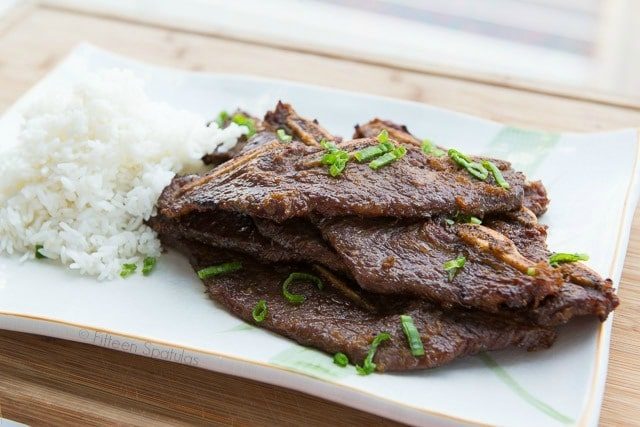
The majority of the ingredients in this recipe are traditional for kalbi, but it also contains my mom’s secret ingredient, which helps the meat become more tender. What is it? Kiwi! But, she has also used pineapple.
The enzymes in kiwis and pineapple, which naturally tenderize meat, are their secret ingredient. Just be careful not to leave the beef in the marinade for too long or it might become too tender and crumble.
Step by Step Overview
Grated kiwi, grated Asian pear, soy sauce, brown sugar, freshly minced garlic, sesame oil, and black pepper are the ingredients for the Korean marinade:
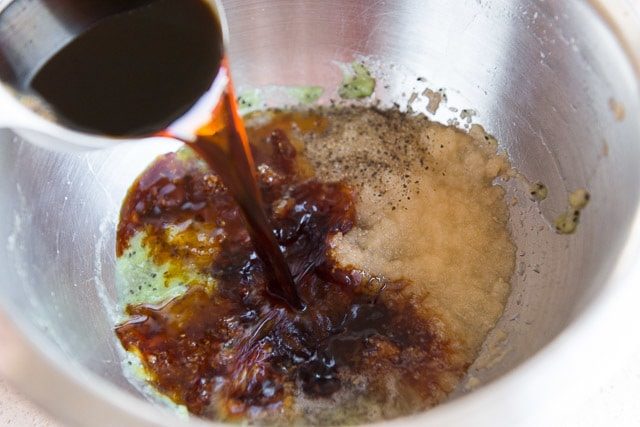
Mix this together, and then you have your marinade:
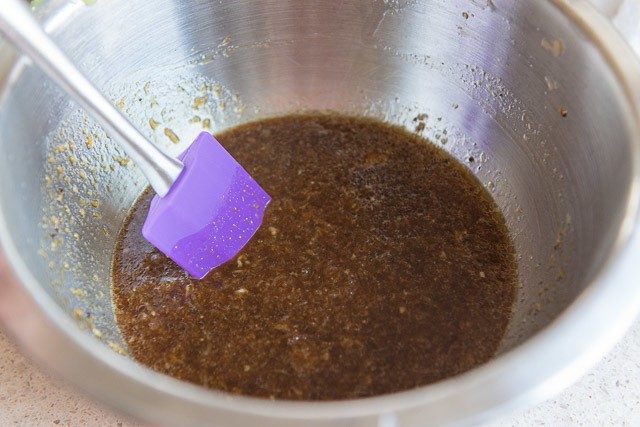
Now it’s time to grab your beef!
Below are Korean-style short ribs, also called flanken short ribs.
They come in thin strips with three bones on top and a few inches of meat below. Despite the fact that they are a little bit skimpier than usual, you can still see how beautifully marbled the meat is:
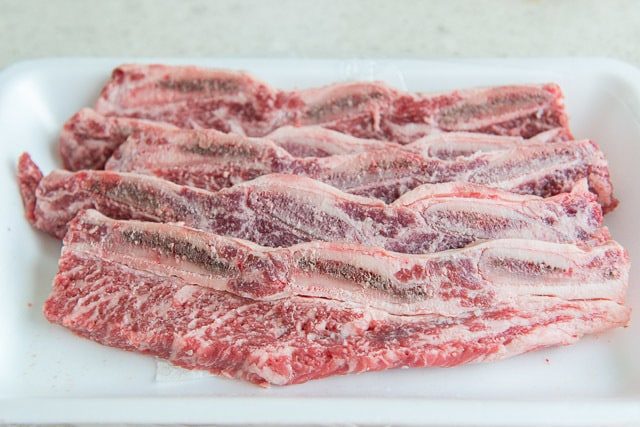
Combine the beef and marinade in a ziptop bag:
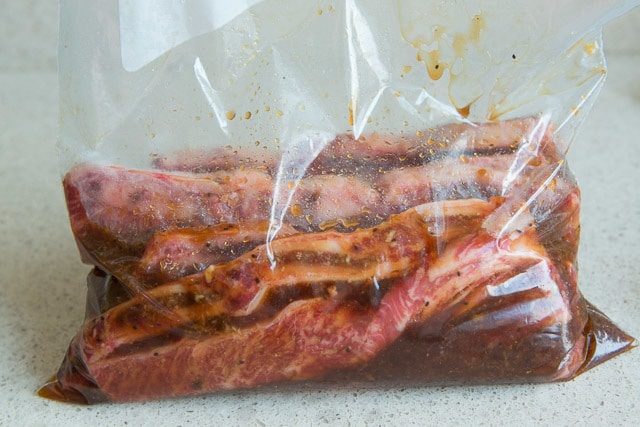
Marinate this for 4 hours, and as long as overnight.
The preferred method for preparing the beef is to grill it, as I believe that beef is best when it is grilled (hello, Grilled Ribeye and Grilled Flank Steak). But I’ve discovered that broiling them is the second-best technique if a hot grill is not an option.
Discard any extra marinade before placing the marinated beef on top of a wire rack on a sheet pan:
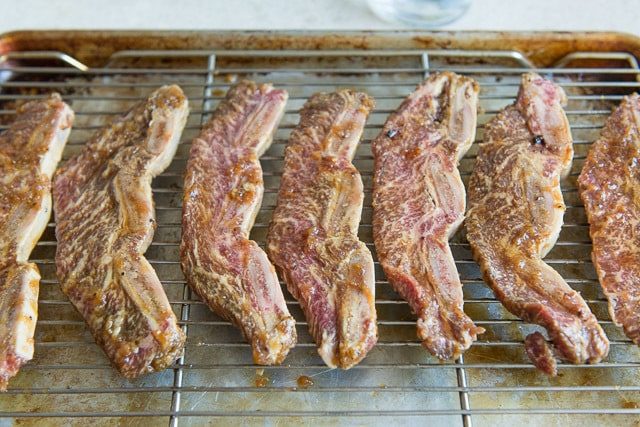
Until they are deeply browned and caramelized, broil them over high heat for 3–4 minutes on each side:
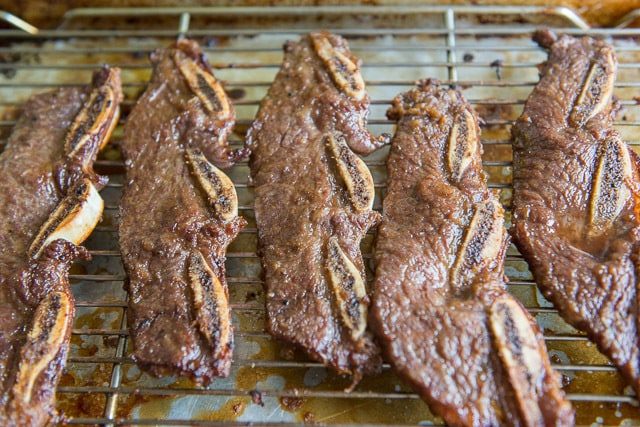
You can pan-fry them if neither of those options is an option, but they don’t caramelize as evenly. They’re still good though.
If desired, serve with rice and top with sesame seeds or thinly sliced green onions.
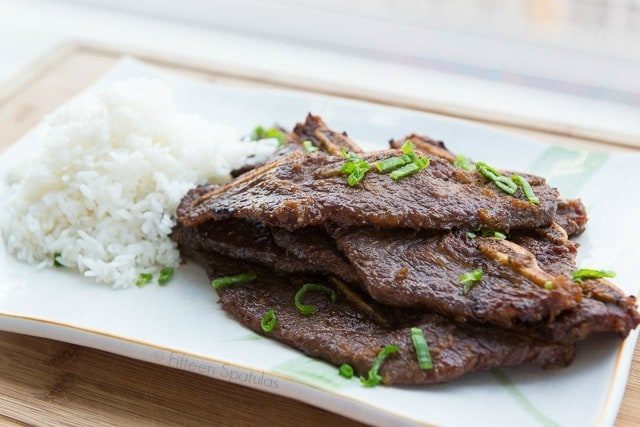
Use kitchen shears to cut between the top bones of the long strip of beef if you want to cut it into bite-sized pieces. Enjoy!.
Recipe Tips and FAQ
Keep in the refrigerator for up to five days in an airtight container.
Yes, you can keep something in the freezer for up to three months if it’s sealed tightly. For best results, thaw overnight in the fridge before reheating.
On the grill or in the oven are your best bets. Because of the meat’s bones, I’ve discovered that they warm up unevenly in the microwave. Reheat the grill on high for one to two minutes per side, or until warm. Reheat in the oven at 350°F for 5–10 minutes, or until warm.
Please give the recipe a 5-star rating in the box below and/or a review in the comments section further down the page if you liked it.
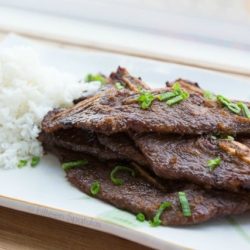
- 1 Asian pear peeled and grated
- 1 kiwi peeled and grated
- 1/2 cup soy sauce
- 1/3 cup packed brown sugar
- 2 cloves garlic pressed or minced
- 1 tbsp sesame oil
- 1/4 tsp freshly ground black pepper
- 2 pounds Korean style beef short ribs
- Grated Asian pears, grated kiwis, soy sauce, brown sugar, garlic, sesame oil, and black pepper should all be combined with a whisk in a big bowl. Combine with the beef in a marinade bag, seal, and refrigerate for at least 4 hours and up to 12 hours.
- Remove the beef from the marinade, and discard the marinade. Either broil the beef on top of a wire rack set over a sheet pan for 3–4 minutes on high for each side, or grill the beef over high heat for 3–4 minutes per side. If neither of those two methods of preparation is possible, you can pan fry them in a skillet. Cook them until the edges are darkly browned and caramelized. Enjoy!.
A food database is used to estimate nutrition, which is only meant to be used as a general guide for informational purposes.
the DIFFERENCE between KALBI and BULGOGI (KBBQ)
FAQ
What part of the cow is kalbi?
“Galbi” is Korean for “ribs,” and in American Korean barbecue joints, the word has largely come to mean beef short ribs that have been cut into long, thin pieces through the rib bones rather than parallel to them.
What does kalbi taste like?
The bulgogi sauce-like sweet and sour flavors of the kalbi marinade are present. The spice from gochujang, the fermented chili paste that appears in a number of other Korean dishes, is less prominent in kalbi than it is in bulgogi. Serve the spicy dipping sauce ssamjang with the kalbi to add a bit of heat.
What cut of meat is kalbi?
The cut, also referred to as “flanken,” is a strip of beef cut across the bone from the short ribs’ chuck end.
What does kalbi mean in Korean?
Generally speaking, gui or grilled dishes in Korean cuisine made with marinated beef (or pork) short ribs in a ganjang-based sauce (Korean soy sauce) are referred to as galbi or kalbi. [1] Galbi, which literally translates to “rib” in Korean, is frequently used to refer to raw ribs.
